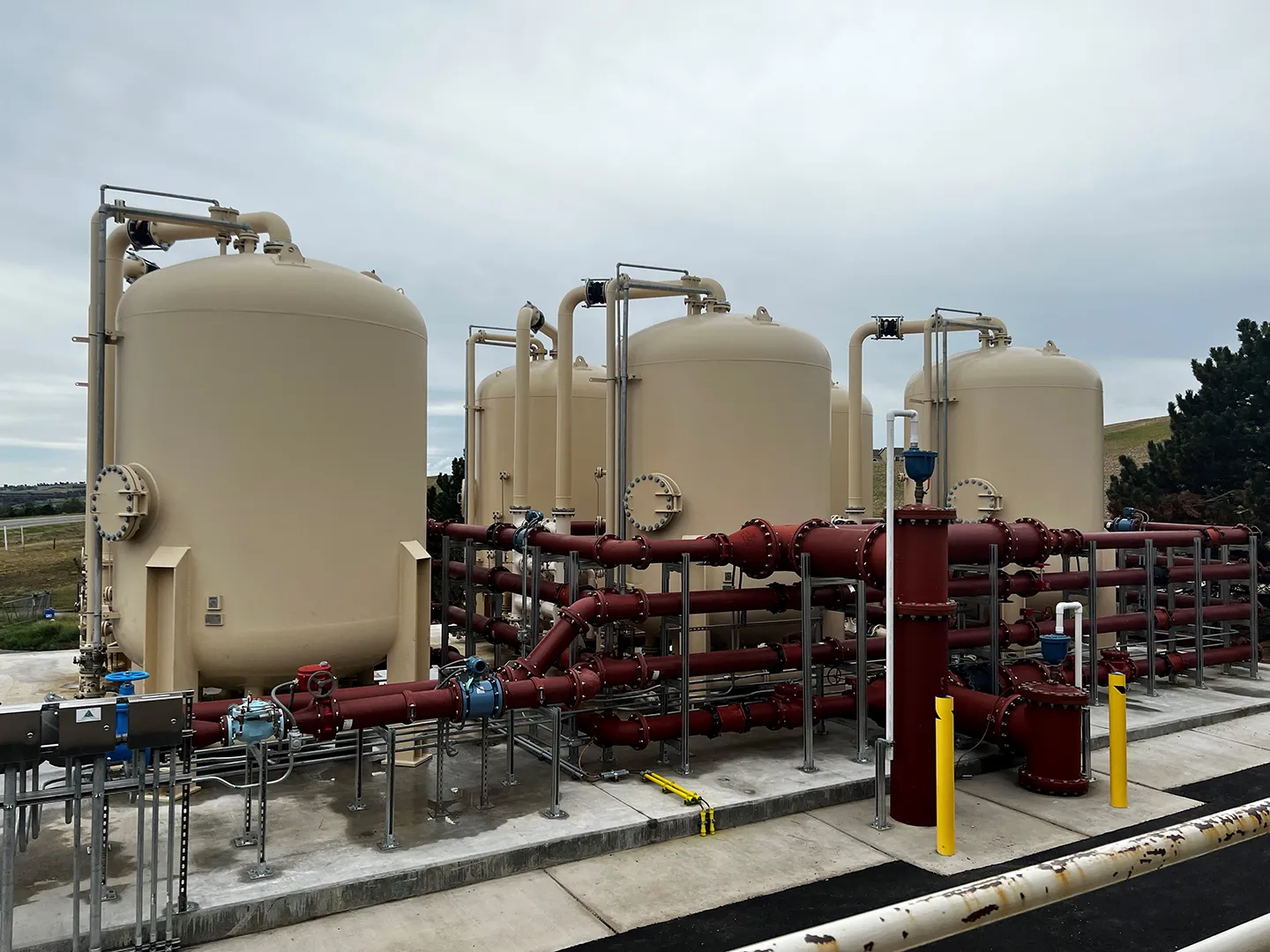On December 30, 2021, a catastrophic wildfire tore through the Town of Superior, Colorado, destroying homes, businesses, and infrastructure, leaving a wake of ash, residue, and millions of dollars in damages for families, business owners, and the Town.
Identifying a Smoky T&O
As a result of the wildfire, residents started to notice a smoky taste and odor (T&O) in their water. There were reports of it in drinking water, shower and bath water, and rivers and streams. Not surprisingly, this quickly became a concern for operators at the Town’s water treatment plant. Because our team holds an on-call contract with the Town of Superior, they reached out seeking a fast and effective solution. Our team quickly jumped into action evaluating the problem, determining the numerous contaminants and identifying design challenges. By teaming with environmental consulting firm Corona Environmental and design-build partner Garney Construction, we developed an effective and long-lasting solution over a very short timeline.
GAC Used to Adsorb Contaminants
Flavor profile analysis testing (conducted by Corona Environmental) was performed for chlorine dioxide and four types of activated carbon to determine the effectiveness of removing the smoky T&O compounds. Lab testing showed that the activated carbon removed the T&O compounds more effectively than chlorine dioxide. Due to ease of implementation and operation, a chlorine dioxide system was piloted first, but we found it did not completely address the T&O issue. Given that the Town was under a great deal of pressure to act quickly, we pivoted to granular activated carbon (GAC). GAC is a media about the size of a small pebble. It’s created by using either burned coconut shells or bituminous coal and works by adsorbing the contaminants on its porous surface, regardless of their size or type. The contaminants are simply removed by adhering to the GAC media as water passes through.
The system has been so successful and will address emerging contaminants (such as PFAS), that they’ve decided to build a permanent structure around it, keeping it as part of their treatment process."
Sarah Vander Meulen and Mike Syverson
The Town of Superior initially elected to rent the GAC system for the removal process, because the idea was that it wouldn’t need to be online indefinitely. However, the system has been so successful and will address emerging contaminants (such as PFAS), that they’ve decided to build a permanent structure around it, keeping it as part of their treatment process.
 Finding a design-build solution that could be implemented on a tight schedule was key to the success of this project.
Finding a design-build solution that could be implemented on a tight schedule was key to the success of this project.
Design-Build Delivers Quick Results
This project was designed, constructed, and delivered in just about seven months; far more quickly than we see on a traditional water treatment project. Not surprisingly, the Town had a keen interest in getting this problem solved quickly and doing it right. Working with our long-time partners, Garney Construction and Corona Environmental Consulting, we were able to work collaboratively to deliver a design solution that met the needs of this community that had already endured a great deal of loss.